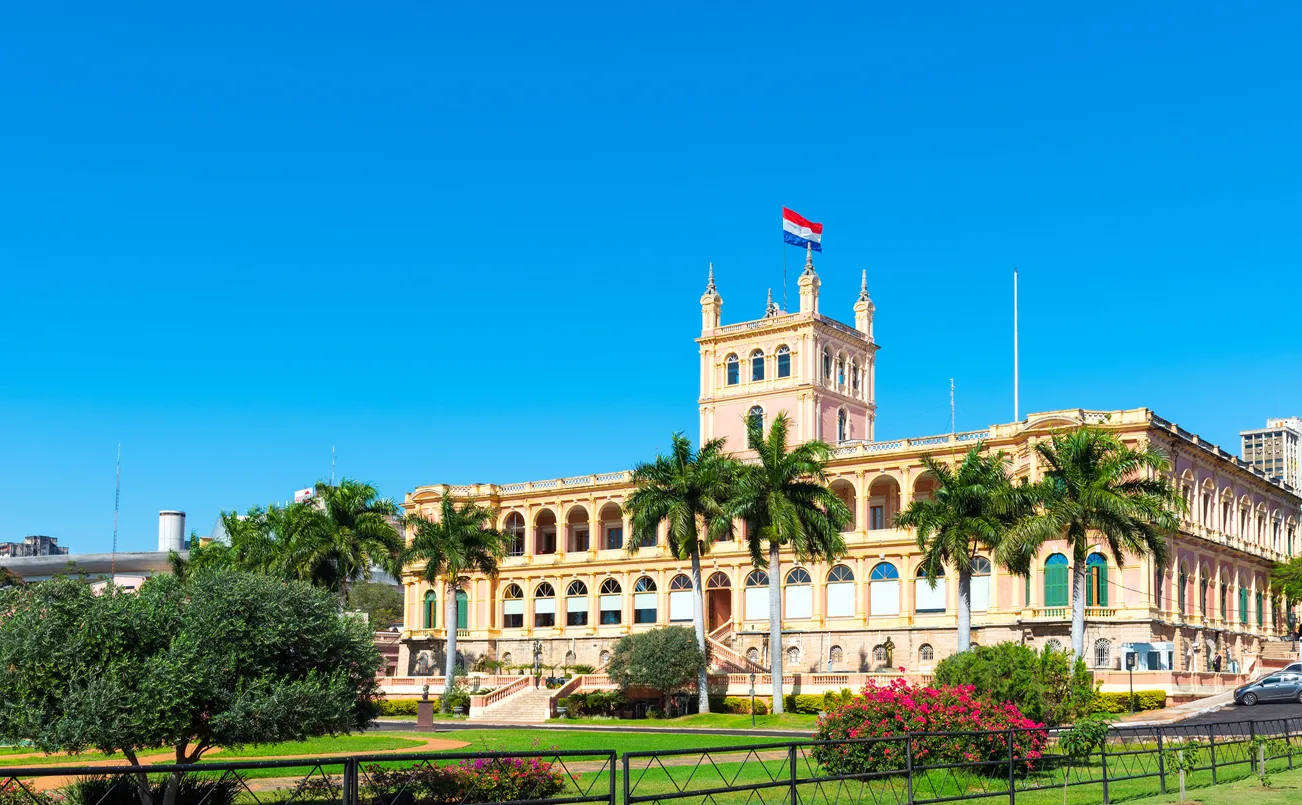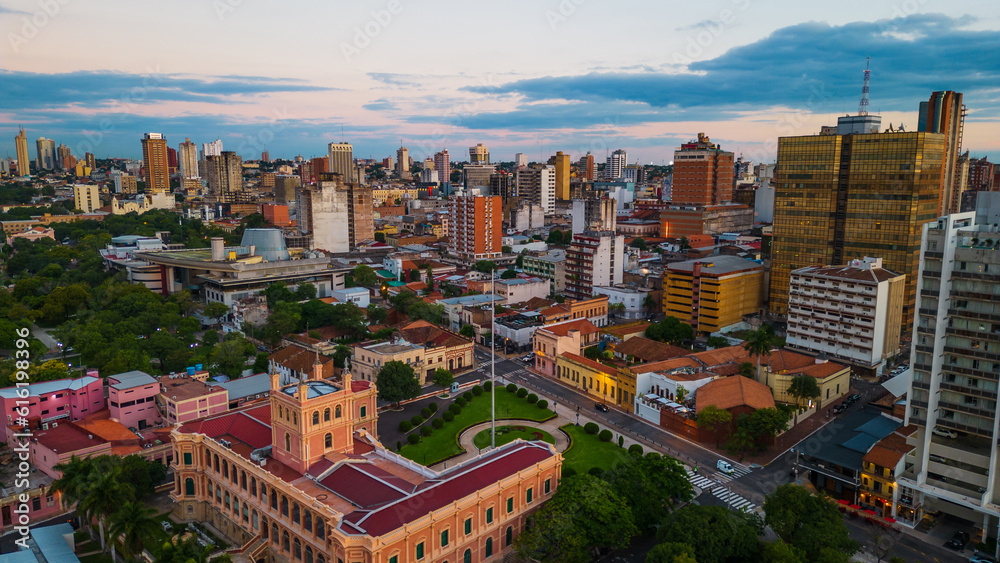



Asunción is the capital city of Paraguay, bordered by the Paraguay River. It’s known for its grand López Palace, the seat of government housing the president’s offices. Nearby, the National Pantheon of Heroes has a mausoleum and plaques commemorating Paraguayan historical figures. The Independence House Museum is marked by its colonial architecture and features artifacts documenting emancipation from Spanish rule. ― Google
May to September (Dry Season): Cooler, comfortable, and ideal for walking tours and cultural activities.
October to March (Wet Season): Hot and humid with tropical rains, but lively with festivals and greenery.
By Air: Fly into Silvio Pettirossi International Airport, about 20 minutes from the city center.
From Nearby Cities: Buses connect Asunción to major cities in Brazil, Argentina, and Bolivia.
Getting Around: Ride-share apps, taxis, and local buses are common. The city is walkable in central areas.
Palacio de los López: The pink presidential palace, beautifully lit at night, facing the Paraguay River.
National Pantheon of the Heroes: A neoclassical monument and mausoleum honoring Paraguay’s national figures.
Manzana de la Rivera: A cultural complex of restored colonial buildings housing museums and performance spaces.
Casa de la Independencia Museum: A well-preserved 18th-century house where Paraguay's independence was declared.
Museo del Barro: A top museum showcasing indigenous and contemporary Paraguayan art.
Recoleta Cemetery: Historic and ornate, similar in feel to Buenos Aires' famous cemetery.
Walk the Costanera: The riverfront promenade is great for sunset walks, biking, or relaxing with tereré (cold yerba mate).
Visit local markets: Mercado 4 is a maze of vendors selling everything from street food to clothes and electronics.
Stroll through Loma San Jerónimo: A colorful hillside neighborhood with murals, staircases, local cafés, and great views.
Shop for handicrafts: Ñandutí lace, ao po’i cotton, leatherwork, and ceramics are popular local crafts.
Catch a show: Asunción has theaters with traditional dance, concerts, and modern plays.
Upscale: Riverfront hotels or stylish stays in Villa Morra and Carmelitas.
Mid-range: Guesthouses or boutique inns in the historic district.
Budget: Hostels and simple lodgings near the city center or San Jerónimo.
Local flavors to try:
Chipa: Chewy cheesy bread.
Sopa paraguaya: A cornbread-like dish.
Mbejú: Starchy cheese pancake.
Tereré: Cold herbal tea, widely shared and sipped in public parks.
Dining neighborhoods:
Villa Morra & Carmelitas: Trendy, modern spots with international fusion.
Centro Histórico: Traditional Paraguayan restaurants and casual street food.
San Jerónimo: Small, artsy cafés with local music.
Language: Spanish and Guaraní (often mixed in daily speech).
Tradition meets modernity: Colonial architecture stands beside contemporary buildings and street art.
Daily rhythm: Mornings are quiet, afternoons busy, and evenings filled with socializing in parks or at cafés.
Warm hospitality: Locals are friendly and appreciate when visitors show interest in their culture and history.